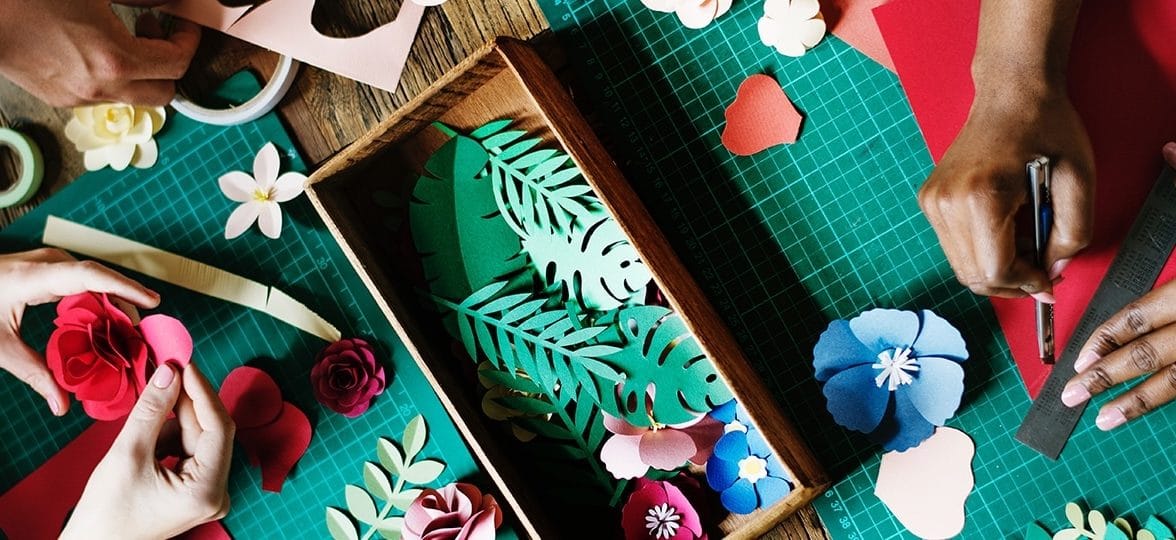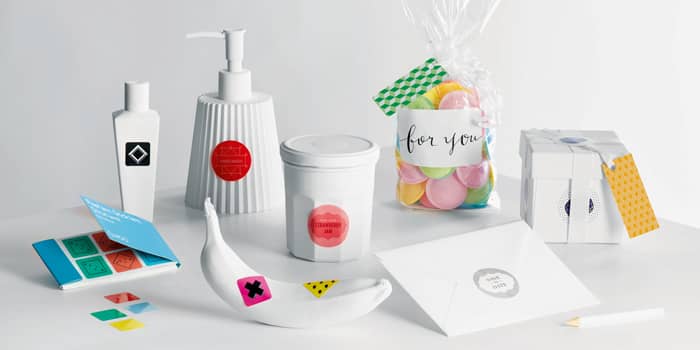How to run a craft event stand – top tips for your first time
Planning for your first craft event? Here are some tips to help make your stand a stupendous success.

Planning for your first craft event? We’re excited for you! Here are some tips to help make your stand a stupendous success.
Why is it awesome to run a stand at a craft fair or event? Let us count the ways…
First off, it’s a top networking opportunity. A craft fair or event gathers everyone in your market together, from small business owners and customers to suppliers, stockists and buyers. Even if the word “networking” makes you nervous, remember everyone there’s in the same boat. Your stand is a ready-made ice-breaker, so let your products speak for themselves. Even if you’re a wallflower by nature, it’s a fantastic way to meet new people and bond over your shared passions.
Of course, you’re also there to make sales. It’s a rare person who can pop by a craft event without collecting some treasures. By selling at an event, you save on postage and packing and get the chance to meet your customer in person too.They’ll go away with a lovely purchase and inspiration from you about how to get the best from it.
You can grow your business too – events like these are fantastic opportunities to meet and learn from similar businesses, get new ideas and also benchmark your prices.
So, if you’re gearing up for an event, follow our tips for a superb stand…

Know your strategy
First things first: know what you want to achieve, and who will help you do it. Are you targeting new customers, bricks-and-mortar stockists or buyers for brands? Or do you want to build collaborative partnerships?
Knowing what you want to get out of the event will help you focus your conversations throughout the day, and help you make the most of any time you’re not with customers.
Think about what you want people to remember about your business and have your elevator pitch to hand – perhaps you offer ‘jewelry crafted from reclaimed silverware,’ ‘rainbow knitted socks and homewares’ or ‘sophisticated prints and originals in watercolour.’ If you’ve got a clear and confident way to say what you do, you’ll communicate well on the day, however busy or shy you might feel.
Bring another person
Even if you normally work alone, a partner to help run your stand can make a huge difference. Find someone who’s a good counterpoint to you – if you’re a bit reserved, choose someone extroverted and chatty who can keep conversation flowing when your energy starts to lapse. You can cover each other for lunch and bathroom breaks, and if things get busy, they can help you make a connection with people who might otherwise have to wait to speak to you.
Make lasting connections
Keep track of the people you meet throughout the day and note down what you talked about, so it’s easy to drop them a line afterwards and follow up with a friendly email or phone call. Collecting business cards is a great first step, but it’s easy to forget who was who and what you talked about after a busy day, unless you capture some extra information.
A simple notepad and pen will do the job, along with a stapler to keep business cards attached to the pages. There are some cool lead capture apps around too, which allow you or your new contacts to enter their information on a smartphone or tablet. If you really want to cement the relationship, you could always follow up your best meetings with a hand-written Postcard too.

Brand yourself
Yes, your work is amazing. But there are a lot of talented folks out there, and a branded stand can give your work that extra edge. Think colours, logo, font, product names – anything with a theme that ties your offering together.
It could be labels that match with posters and displays on the stand, or maybe a series of names that link your products together. For example, if you sell red, blue and yellow ceramics, you could name them strawberry, blueberry and banana, and put matching fruit snacks in the bowls and plates for customers to chew on as they browse.
If your focus is on repeat business or partnership, think about your stand as the first step in a journey. Is your stand’s look and feel compatible with your online shop? Will it be recognisable and consistent for people who visit your website after receiving a business card?
Showcase your wares
Crafts can leave people a little bit in awe. They’re curious, but they don’t want to pick up things that are delicate or disturb a carefully-arranged display. You can help them feel welcome to explore your products with a user-friendly display. That doesn’t mean you have to put everything in utilitarian racks or stacks, of course – you can have a gorgeous arrangement at the back of the stand and something more user-friendly at the front. Choose interactive things like a spinnable carousel stand or rummage-friendly basket that people can browse without feeling that they’re manhandling your goods.
Make sure your prices are visible and you’re showing a range of offerings that includes everything from cheap and cheerful to show-stopping masterpieces. Try to include a mix of strategic choices, including your best sellers and most competitively priced items, and some newer innovations and more expensive items too.
You could include some ‘event exclusives’ – prototypes of new ideas you are working on. You’ll get a range of people’s reactions and feedback on your ideas, and make them feel they’re getting a special experience too.
Have a talking point
Make it easy to start conversations with an ice-breaker. Bring along some interesting bits and pieces that tie into your overall brand. Want to wrap ribbons around the stand legs or decorate with houseplants? Go for it. Or try a humorous prop that will make people smile and provide a photo opportunity. (You know you’ve been waiting for the chance to give that inflatable banana its day in the spotlight.)
If your business involves something people don’t see every day, whether it’s a spinning wheel, a laser engraving machine or a pyrography pen, bring it along and let people see you crafting your wares in real-time. As well as being a great talking point, it shows off the skill and care that goes into your work.
Market with freebies
When it comes to events, one thing is for sure – everyone loves a freebie. If your budget allows, put together some goody bags which include a little gift or two, along with some flyers and business cards.
A neat option is to choose a freebie that doubles as a marketing message. Branded Stickers are a great choice. Or how about a pack of Postcards wrapped in a ribbon?
You could even give out handmade origami creations. And, of course, a few sweets. Who doesn’t love sweets?
Have you run a successful event stand? We’d love to hear your tips. Leave us a comment or send us a tweet.
Ian Bishop is a bespoke, 3D design artist based in the UK. We caught up with him to explore his inspiration and process: how he goes from brief to a real-life, stunning design.
What is 3D design and how did you get into this field?
My work ranges from lighting to sculpture to furniture. I studied a multi-disciplinary course at art school, which I really enjoyed, because it meant I could explore multiple fields and mediums of design. I’m interested in making things, no matter what the medium.
What were you doing before you set up your business?
I worked for a ceramics company in their design studio. My major (at art school) was in industrial ceramics, so I naturally fell into working in that field following my graduation. I then worked for a local company who produced multi-disciplinary design, so from there I knew that there was a way for me to continue doing that kind of work.
At what point did you decide you wanted to stop working for other people, and set up on your own?
I started taking on more and more freelance work whilst working at the ceramics studio. It started with the odd job – people asking me to model this or sculpt that. Over time, I naturally made the crossover – I felt I’d built up enough work, so I went for it.
Talk us through your process. How do go from taking a client’s brief on paper to turning it into a tangible, physical 3D object?
Usually, my client would have some idea of what they wanted – a kind of low relief panel, or a sculpture, or lighting for example. Sometimes they come to me with it already mocked it up in CAD, but they’d have no idea how to actually make it. I’d then have initial meetings with them to discuss the process of how that idea could be made, and we’d work together on the design, ultimately making it into a reality. It’s a very collaborative process – which is one of the things I enjoy most.
There’s a beautiful combination of realism, classicism and quite intimate design references in your work – what brings it all together?
If it’s for a client, then it’s all about problem-solving – combining materials and processes to realize our collaborative idea and reaching an outcome that the client is happy with.
If personal work, I like to take a lot of inspiration from sculptors like Giacometti.
How much of your time is split between commissions and personal work?
I would say it’s around 70% commissions, 30% personal. It’s interesting as I’ve often thought about changing the split to lean a little more towards personal creations, but I really like the commissioned work – it’s incredibly intellectually stimulating – you really have to work together with the client to solve issues.
What’s your favorite client project you’ve worked on?
I worked on a really interesting project recently – a large sphinx – around 2.5m tall and 3m long for a lovely client in Majorca. There was around two tonnes of clay which was cast in a kind of stone material. It was interesting to ship out and we had to hire the second biggest crane in Ibiza to move it!
What’s your favorite medium to work in?
Probably clay or plaster. Clay is just amazing because you can model it, you can take things away, you can add to it – it’s not like carving a piece of stone where it’s a lot more permanent. Plaster is always interesting too – it’s really versatile – there’s so much you can do with it.
How important is brand to you and how are you focusing on building and promoting your brand?
Most of the work I get is by word of mouth. Because my work and creative process is so visual, I rely heavily on photography. Being able to put a different image on the back of every business card to showcase my range of work was such a great option for me! When I’m meeting someone new, I can tailor my card to suit the kind of client I’m giving it to. My website is essential too, it acts as a portfolio – a place for people to easily browse my work.
What are your tips for aspiring entrepreneurs wanting to start their own business?
Work really hard. Listen to people, and try to understand what it is that they want. Most importantly, try your hardest and do your best on each project you’re given.










